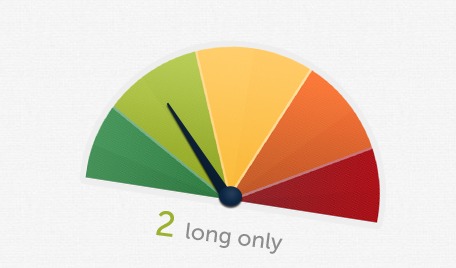 Author: Charles Sizemore
Author: Charles Sizemore
Covestor models: Sizemore Investment Letter and Tactical ETF
Disclosure: Long TEF
It’s a little early for Christmas in July, but now is the time for investors to be putting together their “Christmas lists” of sorts.
Recently, I wrote a piece that described an old investment strategy of Sir John Templeton (see “An Anniversary We’d Prefer to Forget”). Sir John would make a list of companies he’d love to own “if only” they fell to a more attractive price. He would then place limit orders to buy those companies at prices substantially below the current market price. In the event of a sharp sell off, the limit order would be executed, and Sir John would have his shares at the prices he always wanted.
His rationale for the strategy was simple enough: we humans are instinctively herd animals, and we tend to panic when we see others around us panicking. We lose our independent judgment and we freeze in fear at exactly the moment we should be buying aggressively. Templeton’s move was designed to take his own emotions out of the equation; Sir John understood his own human shortcomings, and essentially gamed himself.
Today, with Europe teetering on the edge of a potential meltdown, I’m going to recommend that investors take a similar approach, though mine has the added bonus of adding a little extra income.
I recommend that you make a list of strong multinational companies based in Europe that you are confident can survive Armageddon with their businesses intact.
Ideally, these companies would have significant percentages of their revenues coming from outside of the Eurozone.
Once you have your list of stocks, consider selling deep out-of-the-money puts on them. If prices remain relatively stable or rise, the options expire worthless and you pocket the premium. And if the share prices take a nosedive, the options will be exercised and you will be obligated to buy the shares at the prevailing market price—which was your objective all along. And you still get to pocket the premium.
Here a little explanation is needed. When you buy an option, whether it be a call or put, your risk is limited to the price you paid for the options. You are buying the right to buy or sell shares at a given price, not the obligation.
Selling, however, is a much trickier business. Your upside is limited to the premium at the time you sell the option. But your downside is much, much bigger. In fact, when selling a naked call option, your risk is theoretically infinite. For example, if you sell the right to buy Facebook (FB) at $38 to another investor and the stock rises to $100 the next day, you’re on the hook to buy at the prevailing market rate of $100 and sell at $38. Not an appealing prospect.
Likewise, when you sell a put, you are giving an investor the right to sell you shares at a price that might be far higher than the prevailing market price. So, when selling put options on your list of European stocks you’d like to own, make sure that you have the cash on hand to handle the trade if it is exercised. Don’t get greedy and sell contracts for more shares than you can afford to buy or that you would ideally like to own.
I’m not going to recommend specific put option contracts for you to sell because the entire point of this article was for you to create a list of stocks you like at prices you want to pay. I also want the advice in this article to be general and something that you can use months or years from now; recommending a specific contract would make this article too short-term for my liking.
I will, however, toss out a few company names for you to consider. Last week, I recommended Spanish blue chips Telefonica (TEF), Iberdrola (IBDRY) and Banco Santander (STD) (see “Bargain Hunting in Spain”).
I continue to like all three, and to this list I would add French oil major Total (TOT) and British telecom giant Vodafone (VOD). While Vodafone is not a Eurozone stock, it has significant operations in the Eurozone and I would expect its share price to take a tumble in a general market rout.
If you’re not comfortable with options, that’s ok. You can accomplish essentially the same thing by placing limit orders like Templeton.




